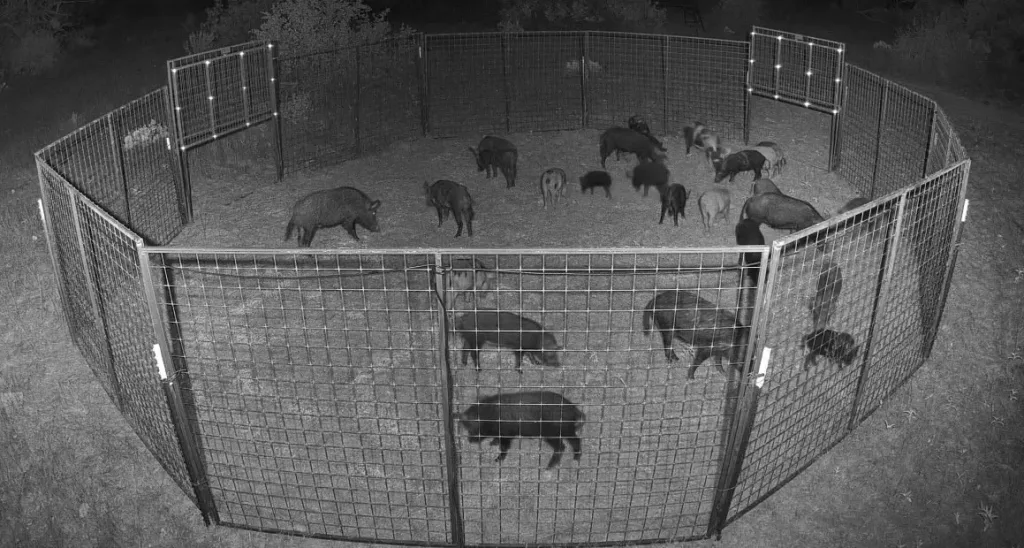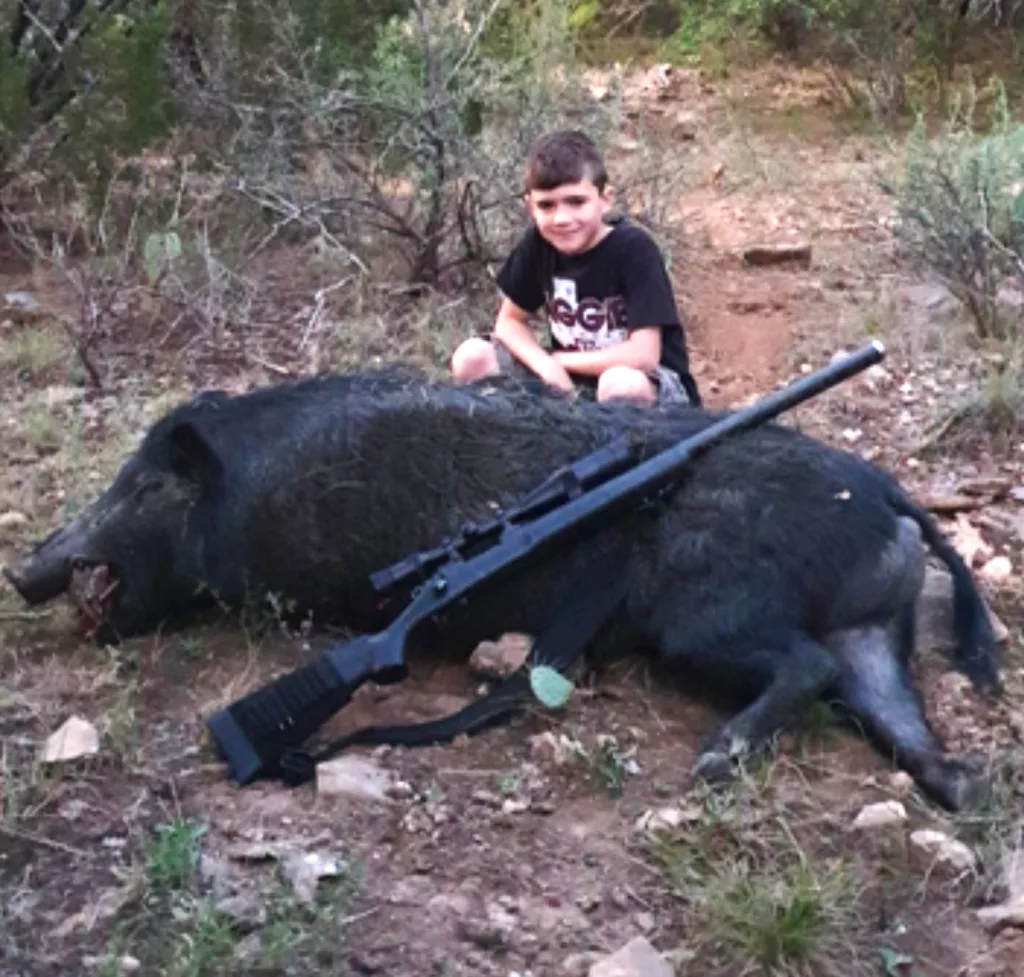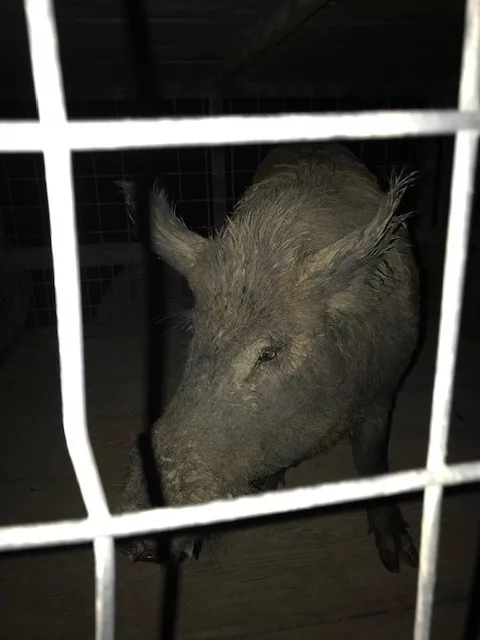Written by Michael Bunker
Published in the Central Texas Outdoors Guide magazine by Brownwoodnews.com for the 24-25 Season. Pick up a free copy of the magazine at one of our partner locations HERE.
Everyone’s heard about the wild hog problem in Texas. It’s the slow-motion apocalypse, the World War Z creature invasion that is both an imminent danger to crops and land, and a monetary and sporting boon that no one really wants to end.
Both things are true. Feral hogs destroy over a billion (Yes. With a “B”) dollars in property a year across the United States, AND… they have helped to make Texas a hunting and tourism paradise attracting sportsmen and their dollars from all over the world. You see, Texas has almost no restrictions on hunting wild pigs. No license is required (only a hunting education course is legally required for those involved in sport-hunting hogs.) You can freely kill hogs for predation (perhaps they are eating your chickens?) or depredation (they destroyed your wheat crop in a single night.) And if you have permission and are legally hunting (following the rules) you can hunt hogs for food and/or sport.
Factoid: A “pack” of feral hogs is called a SOUNDER. A sounder can run from a dozen or more pigs, up to hundreds and hundreds. One day while driving from our land to town, we had to pass through a low spot in the dirt road. As we approached, some wild hogs came running across the road in front of us, so we slowed and stopped. The sounder of hogs continued across the road for many minutes. Literally, and no exaggeration, we shut the car off and waited while hundreds and hundreds of hogs crossed the road. It was like one of those viral videos of sheep herds in Eastern Europe.
Trapping hogs has become a big business. They even have large pen traps now that can be operated by smart phone. You can watch your trap fill up with dozens or more pigs, and then activate the trap door by pushing a button on your phone. Sound like fun? It does to me.

You see, it’s mostly behind me now, but I have a history with the Texas feral hogs.
And I have anecdotes!
For eighteen years I lived with my family on an off-grid homestead here in Texas. We raised cattle, domestic pigs, chicken, sheep, goats, rabbits, and we had large field crops too. We planted several acres of wheat every year and harvested a lot of it by hand. One year, we could tell the wild boars were trying to get into our pig pen to “visit” our females, so we set a hog trap next to the pen.
One day my son came running up and told me that we have a wild hog in the trap! A monster. “It’s hogzilla!” And it was a big one. Wild hogs don’t tend to get as big as the viral monsters you see on social media. Most of those we trapped or that were given to us over the years were well under 100 lbs. Usually around 20 to 30 lbs. was normal. Well, our hogzilla weighed well over 300 lbs.! It was a monster, and after we killed and butchered it, we had single hams that weighed over 50 lbs. a piece!
Back in the day, local ranchers and farmers would call us when they had hogs in their traps. They didn’t want the meat, and they knew we would come get the hogs (usually 1 to 4 at a time) and remove them from the trap. We built a wild hog pen, and we’d take the live hogs to our pen and corn them out (fatten them) for a month or two before butchering them. Trying to manage crazy wild hogs in a pen is not something I would recommend, and it would take another complete article just to tell you those stories! But we butchered and processed over 32 pigs in a single year. Like I said, most of these were very small pigs, but the meat was good and plentiful.
One day we were going about our regular chores and a neighbor pulled in with 9 dead hogs in the bed of his pickup. He’d shot them in his cattle feeder. The family got to work cutting up the pigs and in only a few hours we had all the meat processed and ready to be “canned”. (Canning meat in ‘Mason’ jars is a great way to process and keep meat, and it makes the meat already cooked and ready to be warmed up for a quick dinner off the grid!)

Ok, I’ll tell you one more story…
At one point we had maybe 25 small pigs in our wild pig pen. And when you’d walk up to feed them (EVERY TIME!) they would totally freak out. They’d go crazy, and a wild pig is built like a missile. Literally. They have reinforced skin like armor on their head and backs, and they are tapered toward the front. They run and they do not stop for anything. They don’t dodge around things when they are spooked. They will run clean through a barbed wire fence and not even slow down. Well, every time we’d go to feed them, all 25 would go running full speed into the fences. They’d hit the fences at high speed and destroy them. We’d rebuild the fences (STRONGER, STRONGER, STRONGER!), reinforce them. We added cattle panels, 2 x 6 boards, plywood. Well, the pigs would hit the walls, then reverse course and go in the other direction. Hit the wall, spin around, and go back. One day they hit the wall, and just like in the movie World War Z I mentioned earlier (the movie with Brad Pitt,) they piled up and the last ones climbed the pile and went right over the wall!
Sometimes we’d go to shoot a hog, and you’d have to shoot it 6 or 7 times. We’d use a larger caliber every time, and you still had to hit them just right because of the armor.
Anyway, those were our pig years. They were fun and exciting, and we had free meat all year and every year.
While planning this article, I told my editor this: “Well, one day the free pigs just stopped. No one was calling us anymore to come get the pigs. It was like someone slammed shut a door. Overnight, the free pig gravy train stopped. Then we saw posters in the stores and restaurants in our area. ‘We’ll come get your wild pigs for charity!’”
Maybe. I’ve never seen nor heard from the pig meat charity people, but I suppose they are out there.
Anyway, as time passed, we learned that killing hogs was becoming a big business. In fact, many hunters report that they would rather hunt hogs now than deer. Hogs can be hunted in the traditional way – just like deer are hunted – from deer stands. Or they can be hunted from helicopters! I’m not lying! Look it up.
Some folks argue that hunting pigs actually increases their population. Shooting a few of them, they say just splits the sounder into bits and scatters the smaller groups across the area. There they multiply even faster, like a virus. In order to truly affect their numbers, you have to trap or kill the whole sounder at once. Not an easy task. So, they multiply when you kill them.
Maybe that’s true, but Texas has chosen to take the lemons and make lemonade. If the pigs want to multiply, we’ll just have more fun and make money from it.
And I don’t know what is really happening to the meat. Sure, some of it is taken to the meat processors. A lot is made into sausage. But I wonder if most of the hunters who are hunting hogs are taking the meat, or if many of them are still donating the meat to charity.
When we were in Australia, they had a similar problem with kangaroos. Kangaroos are ubiquitous there. Like hogs, they wander into traffic on the high-speed highways and are hit by cars and buses. Almost every vehicle we saw in Western Australia (granted, this was over 20 years ago) had what they called a “roo-bar” on the front. We call those “brush guards” here in Texas. They were to protect the vehicles from being destroyed every time they hit a roo. Our hosts told us that Australia is so big that the cross-country buses can’t slow down every time they hit a kangaroo, so they had super-reinforced roo bars, and they just drive full speed. One bus might hit dozens of roos on a journey. And if you’ve lived in Central Texas for a long time, most likely you have an automotive pig encounter story to tell. Automobile-hog collisions add up to millions of dollars in car damage every year.

One of our hosts in Australia worked for a time in a meat factory where they processed kangaroos. Most of the meat went into the dog food industry, but some roo meat is sold in stores in Australia. Roos are everywhere, and they are pests. And landowners and ranchers can shoot roos at will, or at least they could when we were there. You’ve heard that guns are banned in Australia, but when we were there, that wasn’t totally true. Landowners could own a .22 Magnum rifle for shooting kangaroos.
I hope I haven’t ruined your imaginative picture of Australia as a land with fuzzy kangaroos and koalas just hanging around and hugging people.
The point is that, like in Australia, Texas has come to have a love/hate relationship with this invasive species. And as time passes, hog killing is becoming a huge business. Hog hunts are available in most places around the state, especially here in the Heart of Texas. And many large landowners, if you ask nicely, might let you shoot or trap pigs on their land. Who knows?
And if we have an apocalyptic collapse of civilization or a World War – something that looks more likely every day – well, Texas might just become the meat market of the post-apocalypse. Just like when we shipped tens of millions of longhorns up north after the beef markets collapsed after the Civil War.
I’m up for it, either way.
Story written by Michael Bunker for the Central Texas Outdoors Guide magazine published by Brownwoodnews.com for the 24-25 Season. Pick up a free copy of the magazine at one of our partner locations HERE.